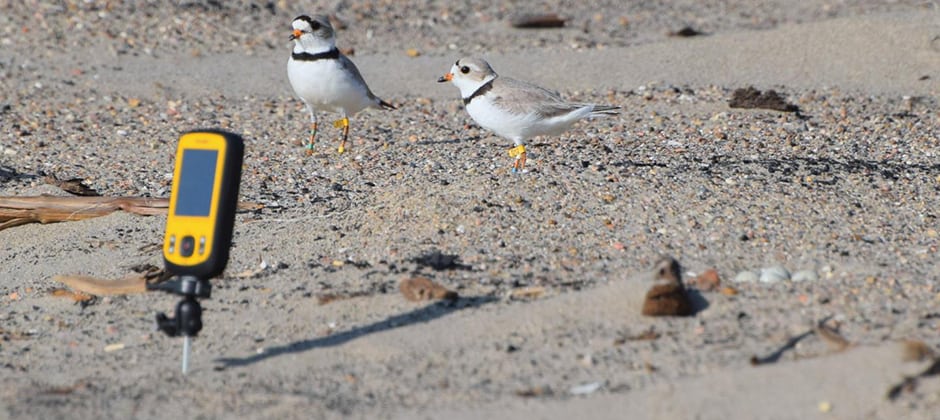Share this article
Filling piping plover research holes
Since piping plovers were listed under the Endangered Species Act in 1985, researchers have been uncertain about some population dynamics and connectivity among the breeding groups that could help the birds recover in the Northern Great Plains.
Past research had assumed a metapopulation structure of the piping plovers (Charadrius melodus) in the Northern Great Plains population, which they used to determine the birds’ extinction risk. As the U.S. Fish and Wildlife Service works on updating its recovery plan for the listed species, researchers wanted to determine if these assumptions were true to help determine how the birds really are faring.
“This study tried to evaluate some of those assumptions and provides derived estimates for some of those vital rates,” said TWS member Rose Swift, a research ecologist with the USGS Northern Prairie Research Center and the lead author of the USGS study.
For management purposes, piping plovers were set up into breeding groups, based on habitats like alkali wetlands and northern river segments of the Missouri River and administrative units.
Swift and her colleagues first looked at dispersal and connectivity between two of those breeding groups. Then, they looked at the plovers’ nesting and reproductive success.
The research included six years of field studies, which involved large crews going out, catching and marking individual piping plovers as well as monitoring nests and chicks for survival analyses. They ran models to help them estimate dispersal and survival from one year to the next.
Past research had assumed that the four breeding groups had very low dispersal between one another and that they functioned as a true metapopulation. “We found dispersal rates were much higher and unbalanced,” Swift said. “Individuals aren’t being replaced in equal numbers as individuals move between management units within those defined breeding groups.” This could have implications for changing the way the populations are managed.
When looking at nesting and reproductive behavior, the team found that when piping plovers renested, those nests often failed. They also found that based on previous methods, the local populations don’t appear to be producing enough chicks to have a stable population. The team also found that adult plovers were more likely to postpone breeding, at least for one year, than to move to another management unit that had better habitat so they could breed. The finding suggests that assuming adults are going to breed every year could skew population size estimates, Swift said.
The researchers also found some effects of habitat on the species’ dispersal and survival. The birds spend their time in three habitat types in the region: reservoirs, river habitat and alkali wetland habitat.
Swift and her team found that in reservoirs, the birds had low survival, less site fidelity and low reproductive success. River and alkali wetland habitats were better for the birds, and when there was more of those areas available, piping plovers did better. This information supports the U.S. Army Corps of Engineers decision to focus on providing abundant breeding habitat for piping plovers on the Missouri River.
“One of the things I hope this helps the most with is an evaluation of piping plovers here in the Northern Great Plains,” Swift said. “We provided a lot of good, new information that was unknown for this population including new estimates for dispersal, survival and renesting. I hope that can in the future get incorporated back into a population analysis, because that would help the U.S. Fish and Wildlife Service have a better understanding of what the piping plover population is actually doing on the landscape.”
Header Image: A video camera points at a nest where two banded piping plover adults stand on a sandbar on the Garrison Reach of the Missouri River in North Dakota. Video cameras were used to identify adults attending nests. Credit: USGS








